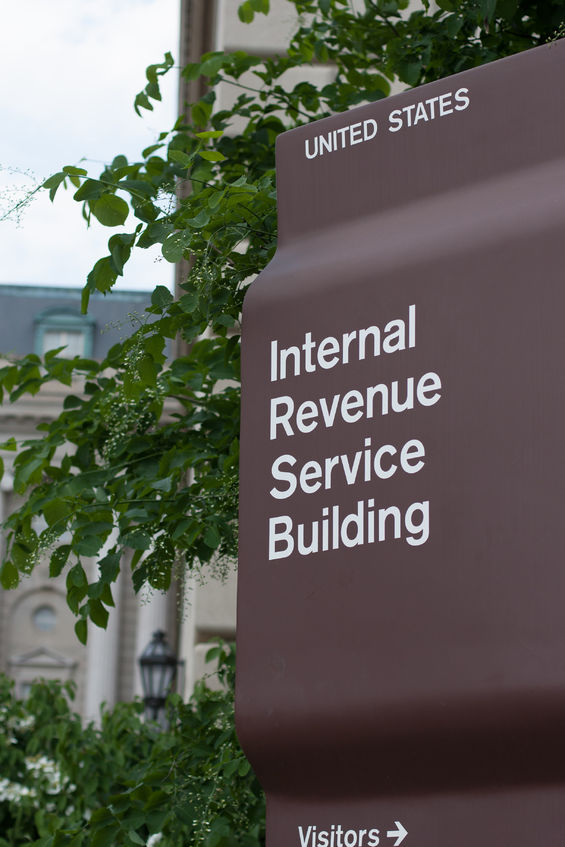Latest Facts & News Hook
- The current acceptance rate for OICs is 36.55%, indicating that slightly over one-third of submissions are approved.
- New digital submission options via IRS Online Account
- Enhanced financial documentation requirements for high-income applicants
- Increased scrutiny on asset valuation methods
Getting the IRS to accept less than you owe can feel impossible unless you know the rules and the right steps. With new IRS changes, stricter reviews, and more digital tools in 2025, the Offer in Compromise process is tougher but also more accessible if you’re prepared.
This blog post gives you clear answers, real strategies, and the latest updates on how to get an offer in compromise approved so you can build the strongest case for settling your tax debt for less.
What Is an Offer in Compromise?
An Offer in Compromise (OIC) is a deal you can make with the IRS to settle your tax debt for less than the full amount you owe. The IRS only considers this if you truly can’t pay your full tax bill or if paying it all would create a serious financial hardship for you. In simple terms, it’s a way to clear your tax debt for a smaller amount, but only if you meet strict requirements.
What Counts as Financial Hardship?
You need to prove to the IRS that you can’t pay your full tax debt. The IRS looks at:
- Your income and expenses
- The value of your assets (like your home, car, or savings)
- Your debts and liabilities
- Any special situations, like medical issues or unemployment
If you meet these rules and can show real financial hardship, you may qualify for an Offer in Compromise.
However, remember that the IRS will review your application closely and may request additional information before making a decision. Understanding how to get an offer in compromise approved starts with presenting a complete and truthful picture of your financial hardship.
Offer in Compromise Eligibility Requirements
To apply for an Offer in Compromise, you must meet all of these requirements:
- You have filed all required tax returns.
- You have made all estimated tax payments for the current year.
- You are not in an open bankruptcy case.
- If you own a business with employees, you have made all required federal tax deposits for the current and past two quarters.
Important Note on IRS Criteria
OIC eligibility is based on objective criteria and your Reasonable Collection Potential (RCP), the amount the IRS believes it can collect from you based on your assets, income, and allowable expenses. Barring exceptional circumstances, if your RCP equals or exceeds the full amount of tax, interest, and penalties owed, the IRS will not accept an offer for less than that total. In these cases, the taxpayer generally must pursue an Installment Agreement instead.
What Documents Do You Need to Apply?
Before you apply, gather these documents to show your financial situation:
- Form 656: The main Offer in Compromise application (one for each tax debt type).
- Form 433-A (OIC): Collection Information Statement for individuals and self-employed.
- Form 433-B (OIC): Collection Information Statement for businesses.
- Proof of income: Recent pay stubs, Social Security, pension, or benefit statements.
- Bank statements: Last three months for all accounts.
- Proof of expenses: Bills for rent/mortgage, utilities, insurance, child care, etc.
- Proof of assets: Car titles, mortgage statements, investment account statements.
- Medical bills or disability records: If claiming hardship.
- Unemployment records: If unemployed.
- List of debts: Credit card statements, loan balances, and monthly payments.
- Legal documents: Divorce decrees, court orders, or other relevant paperwork.
- IRS payment voucher: If making a down payment.
- Copy of your most recent tax return.
Mastering IRS Form 656 for Your Offer in Compromise
IRS offer in compromise form 656 is the main form you need to fill out when you want to apply for an Offer in Compromise (OIC). This form informs the IRS of your identity, the taxes you owe, and the amount you are offering to pay. It also allows you to choose how you want to pay, either in a single lump sum or through a payment plan.
Form 656 is for both individuals and businesses. You must list all the tax years or periods you want to include in your offer. The form also requests your personal information, details about your business (if applicable), and the reason for making the offer.
In short, Form 656 is your official application for an OIC. It provides the IRS with all the basic details it needs to begin reviewing your request.
| Note → There is only one main form for the Offer in Compromise, which is Form 656. You may see something called “Form 656-B,” but that’s just the name of the booklet that provides instructions and includes all the necessary forms for the application. You don’t fill out a Form 656-B itself. There is also no Form 656-A for this process. Just remember: you fill out Form 656, and you can use the 656-B booklet to help you understand and complete your application. |
Section-by-Section Guide to IRS Form 656
Filling out IRS Form 656 is a key step when you want to apply for an Offer in Compromise (OIC). Here’s a simple and complete breakdown of each section, so you know exactly what to expect and what to fill out, based on the latest IRS form.
Section 1: Individual Information (Form 1040 filers)
Fill out this section if you are an individual, self-employed, or personally responsible for certain business taxes (like the Trust Fund Recovery Penalty or excise tax).
- Enter your first name, middle initial, and last name.
- Provide your Social Security Number (SSN) or Individual Taxpayer Identification Number (ITIN).
- If this is a joint offer, include your spouse’s full name and SSN or ITIN.
- Write your home physical address (street, city, state, ZIP code, and county).
- If your mailing address is different or you use a P.O. box, enter that as well.
- Indicate if this is a new address since your last filed tax return, and if you want the IRS to update its records.
- If you are a sole proprietor, you can include your Employer Identification Number (EIN).
- List all the tax years or periods you want to include in your offer, for example, 1040 income tax years, Trust Fund Recovery Penalty periods (include business name), 941 quarterly periods, 940 annual periods, or other federal taxes (specify type and period).
- If you need more space, you can attach a separate sheet titled “Attachment to Form 656” and make sure to sign and date it.
- If you qualify as low income, check the Low-Income Certification box to request a waiver of the $205 application fee.
- Don’t forget to sign and date this section before moving on.
Important Notes:
- Only fill out Section 1 if you are applying as an individual. If you are submitting an offer for a business, skip to Section 2.
- If you and your spouse have both joint and separate tax debts, each person must submit a separate Form 656 for their share.
This section helps the IRS know precisely who you are, what taxes you want to settle, and if you qualify for any special fee waivers. Double-check all your details to avoid delays.
Section 2: Business Information (Form 1120, 1065, etc., filers)
Fill out this section if you are submitting an offer for a business, such as a corporation, partnership, LLC, or LLP.
- Enter the legal name of your business as it appears on IRS records.
- Provide the Employer Identification Number (EIN) for the business.
- Write the business address, including street, city, state, ZIP code, and county.
- If your business mailing address differs from your physical address, include it as well.
- Fill in the name, title, and daytime phone number of the person the IRS should contact about this offer.
- List all the business tax periods you want to include in your offer, for example, 1120 corporate income tax years, 941 quarterly employment tax periods, 940 annual federal unemployment tax periods, or other business tax types (specify type and period).
- If you need more space for tax periods, attach a separate sheet titled “Attachment to Form 656” and make sure to sign and date it.
- The person authorized to sign for the business (such as an owner, officer, or partner) must sign and date this section before moving on.
Important Notes:
- Only fill out Section 2 if you are submitting an offer for a business. If you are applying as an individual, use Section 1 instead.
- There is no application fee waiver for businesses.
Section 3: Reason for Offer
Everyone must fill out this section, whether you are an individual or a business.
- Check the box that matches your reason for submitting the offer:
- Doubt as to Collectibility: You cannot pay the full amount you owe.
- Effective Tax Administration: You can technically pay, but doing so would create an economic hardship or be unfair for other reasons.
- If you select “Effective Tax Administration,” check whether it is due to economic hardship or other exceptional circumstances.
- Provide a clear explanation of your situation if you select this option.
Section 4: Payment Terms
This section allows you to choose how you would like to pay your offer amount.
- Lump Sum Cash:
- You agree to pay your complete offer in five or fewer payments.
- You must send 20% of your offer amount with your application.
- Periodic Payment:
- You will pay your offer in 6 to 24 monthly payments.
- Send the first month’s payment with your application.
- Continue making monthly payments while the IRS reviews your offer.
- If you qualify for Low-Income Certification, you do not need to send an upfront payment or make monthly payments during the review.
Section 5: Designation of Payment and Electronic Federal Tax Payment System (EFTPS)
This section is for telling the IRS how to apply your payments.
- You can choose which tax year or debt your payment should go to, or let the IRS decide.
- If you pay electronically using EFTPS, write down the payment date and the confirmation (EFT) number.
- Ensure that electronic payments are made on the same day you submit your application.
- If you want to split payments between different tax periods, you can note that here.
Section 6: Source of Funds, Making Your Payment, Filing Requirements, and Tax Payment Requirements
This section covers how you will fund your offer and confirm that you meet IRS rules.
- Indicate to the IRS the source of the funds for your offer (e.g., savings, family assistance, sale of an asset, or a loan).
- Check the boxes to confirm you have filed all required tax returns.
- Confirm you have made all estimated tax payments for the current year.
- If you are a business owner, ensure that all federal tax deposits are up to date.
- Make sure to check every box that applies to demonstrate that you meet the IRS filing and payment requirements.
Section 7: Offer Terms
This section explains the terms and conditions for your offer.
- Read through the terms carefully.
- This section describes your responsibilities and the IRS’s rights if your offer is accepted.
- It explains what happens if you withdraw your offer or want to appeal a decision.
- The IRS can contact other people to check your information.
- You agree to stay current with all tax laws in the future if your offer is accepted.
Section 8: Signatures
You must sign and date the form after reviewing everything.
- If you are filing jointly, your spouse must also sign and date.
- For businesses, an authorized person (such as an owner, officer, or partner) must sign and include their title.
Section 9: Paid Preparer Use Only
This section is for someone who helped you fill out the form (like a tax professional).
- If you used a paid preparer, they must complete and sign this section.
- If you filled out the form yourself, skip this section.
Crafting a Winning Offer in Compromise Letter
A strong Offer in Compromise (OIC) letter is your opportunity to clearly demonstrate to the IRS why it should accept your offer. This letter is not about filling out the forms; it’s about telling your story honestly, providing proof, and making it easy for the IRS to say “yes.”
Here’s how to craft a letter that stands out, based on official IRS guidance and real case examples:
- Be Clear and Direct
Start your letter by stating that you are submitting an Offer in Compromise. Clearly mention the tax years or periods you want to settle and the amount you are offering.
- Tell Your Story Honestly
Briefly explain why you cannot pay the full tax debt. Use simple, real-life details:
- Mention any job loss, health problems, or other hardships.
- Be specific, but do not exaggerate.
- Connect Your Situation to IRS Rules
Show that your case fits the IRS’s reasons for accepting an OIC:
- Doubt as to Collectibility: You simply do not have enough income or assets to pay the full debt.
- Effective Tax Administration: Paying in full would cause serious hardship, even if you technically could pay.
Mention which reason applies to you and keep your explanation short and clear.
- Back Up Every Claim with Proof
List the documents you are sending with your letter:
- Pay stubs, bank statements, medical bills, unemployment records, or any other proof of hardship.
- Make sure these match the information on your Form 433-A (OIC) or 433-B (OIC).
- Show You’re Serious About Compliance
Let the IRS know you are committed to following tax rules in the future; for example, add, “If my offer is accepted, I will file all future tax returns on time and pay any taxes owed.”
- Be Polite and Professional
End your letter by thanking the IRS for its time and offering to provide any additional information they may need, small gestures like this show cooperation and professionalism, and they can help you get closer to how to get an offer in compromise approved.
Sample Offer in Compromise Letter Template
Below is a sample offer in compromise letter to the IRS you can adapt to your situation. It follows the structure of the IRS Form 7249 (Sample) and includes replaceable fields, along with suggestions to strengthen your request:
| [Your Name] [Your Address] [City, State ZIP] [Social Security Number or EIN] [Date]Internal Revenue Service Offer in Compromise UnitSubject: Offer in Compromise for Tax Years [List Years]Dear IRS Officer,I am submitting this Offer in Compromise to settle my tax debt for the years [list tax years or periods]. I am offering $[offer amount] as a compromise amount, to be paid [in a lump sum/through monthly payments].State your reason for the offer clearly. Choose either “Doubt as to Collectibility” or “Effective Tax Administration” and briefly explain your hardship.Due to [brief explanation of hardship, such as job loss, medical expenses, or business downturn], I am unable to pay the full amount owed. My current financial situation, as shown in the attached Form 433-A (OIC)/433-B (OIC) and supporting documents, demonstrates that I do not have the means to pay more.Note → Reference the key documents you are attaching. This builds credibility and shows you are organized, as shown below.I have included the following documents to support my offer:
Show willingness to comply in the future. This reassures the IRS you won’t fall behind again. If my offer is accepted, I am committed to filing all future tax returns on time and paying any taxes owed. Thank you for considering my offer. If you need more information or documents, I am happy to provide them. Sincerely, |
Negotiation Tactics to Strengthen Your Letter
- Be truthful and specific: Use real numbers and facts from your forms and documents.
- Stay concise: The IRS appreciates clear, direct communication.
- Match your story to your paperwork: Make sure everything in your letter lines up with the details in your Form 656 and Form 433-A/B (OIC).
- Highlight special circumstances: If you have unique hardships (disability, dependent care, etc.), mention them and attach proof.
Calculating Your Reasonable Collection Potential (RCP)
The IRS uses something called “Reasonable Collection Potential” (RCP) to figure out if your Offer in Compromise is fair. RCP is the total amount the IRS thinks it can collect from you, based on your assets and your income after covering basic living expenses. Your offer must be at least as much as your RCP, or the IRS will likely reject it.
How the IRS Calculates RCP?
Here’s the simple formula the IRS uses:
| RCP = Value of Your Assets + (Monthly Allowable Expenses) × Months |
- Value of Your Assets: This means what your house, car, bank accounts, and other things you own are worth (after subtracting any loans).
- Monthly Income: All the money you bring in each month.
- Allowable Expenses: The IRS has strict rules about what counts as a “necessary” expense (see below).
- Months: Use 12 months if you’re offering to pay in 5 months or less (lump sum). Use 24 months if you want to pay over 6–24 months (payment plan).
Tip: You can use the IRS Offer in Compromise Pre-Qualifier Tool to estimate your RCP and see if you might qualify.
Allowable Expense Standards for 2025
The IRS only lets you count certain expenses as “allowable” when figuring out your RCP. These are based on national and local standards and are updated every year.
National Standards
| Family Size | Food, Housekeeping, Apparel, Personal Care, Misc. (per month) |
| 1 | $839 |
| 2 | $1,481 |
| 3 | $1,753 |
| 4 | $2,129 |
| Each add’l | +$394 |
Local Standards
- Housing & Utilities: Varies by county and state. The IRS provides a chart for your area.
- Transportation: Varies by region. For example, car ownership is about $662/month for one car.
- Health Care: $84/month per person under 65, $149/month per person 65 and older.
Exceptions
If you have special circumstances, like high medical bills or living in a high-cost city, you can claim more, but you must provide proof (like bills or doctor’s letters).
Strategic Offer Amount Formulation
One of the key parts of how to get an offer in compromise approved is submitting an offer that the IRS considers fair. That means using the RCP formula and being realistic:
-
- Figure Out Your Asset Value: Add up what you own and subtract any loans.
- Calculate Your Disposable Income: Subtract allowable expenses from your monthly income.
- Pick Your Payment Plan:
-
- Lump sum: Multiply disposable income by 12.
- Payment plan: Multiply disposable income by 24.
- Add It Up: Your offer = Asset value + (Disposable income × months).
Tip: If you can’t afford the minimum offer, explain your special situation in detail and attach proof. The IRS may accept less if you show real hardship.
The OIC Submission Process: Step-by-Step
Submitting your Offer in Compromise (OIC) is the final step after you’ve gathered your documents and filled out all the necessary forms. Here’s how to move forward:
Step 1: Review Your Completed Forms and Documents
As covered in the “What Documents Do You Need to Apply?” section, make sure you have completed all required forms (like Form 656 and Form 433-A/B (OIC)) and gathered every supporting document listed. Double-check that everything is accurate, signed, and up to date.
Step 2: Assemble Your Application Package
Assemble your forms and documents in the order suggested in the blog above. Make sure your name and SSN/EIN are included on every page, as previously advised, to prevent any information from being lost.
Step 3: Choose Your Submission Method
You can submit your OIC package by mail or online:
- By Mail: Send your application to the IRS address listed in the Form 656 Booklet for your state. Using certified mail or a tracking service is a good idea.
- Online: If you are an individual, you can now apply and upload your documents through your IRS Online Account.
Step 4: Include the Required Fees and Initial Payment
As explained in the “Fee Structures and Payment Options” section above:
- Most applicants must include a $205 application fee (unless you qualify for the low-income waiver).
- For a lump-sum offer, include 20% of your total offer amount.
- For a periodic payment plan, include your first monthly payment.
- If you qualify for the low-income waiver, you do not need to send any payments with your application.
Tip: If mailing, send separate checks for the application fee and the initial payment, or pay electronically and note your payment details on the form.
Step 5: Track Your Submission and Respond to IRS Requests
After submitting, keep copies of everything for your records. The IRS will send you a letter confirming receipt of your package and may request additional information if needed. Respond quickly to any IRS requests to avoid delays.
IRS Negotiation Tactics and Case Management
Getting your Offer in Compromise (OIC) approved often means working with the IRS through negotiations, requests for more information, and sometimes counteroffers. Here are practical strategies to help you respond effectively and keep your case moving forward.
Common IRS Counteroffer Scenarios
The IRS may not always accept your first offer. Here’s how to handle common negotiation points:
- Asset Valuations: The IRS might value your home, car, or other assets higher than you do. If this happens, provide recent appraisals, photos, or repair estimates to support your lower value. For vehicles, show mileage and condition reports. For homes, include local sales comparisons or evidence of needed repairs.
- Expense Allowances: If the IRS disallows some of your claimed expenses, point to the IRS’s own allowable expense standards and provide receipts, bills, or contracts. For special situations (like high medical bills), attach clear proof and a short explanation.
- Offer Amount: If the IRS suggests a higher settlement, review their calculations. If you disagree, politely explain your reasoning and provide updated documents if your situation has changed.
Post-Submission Timeline: What to Expect
After you send your Offer in Compromise, here’s what usually happens:
- Initial Check (2–4 weeks): The IRS looks to see if your forms and documents are complete. If anything is missing, they’ll send it back.
- Assigned to Examiner: If your package is complete, an IRS examiner will be assigned to your case and may contact you for more information.
- Review Period (6–12 months): The IRS reviews your financial details, checks your documents, and determines if additional proof is needed. Most cases take approximately 6–12 months, but some may be faster or slower.
- Decision: The IRS will send you a letter with their decision. If your offer is accepted, you’ll follow the payment plan you chose. If rejected, you can appeal within 30 days.
During the process:
- The IRS usually stops collection actions, but interest still adds up.
- You don’t have to make payments on any old payment plans while your OIC is being reviewed.
Tracking Your Application Status
- IRS Online Account: Log in to your IRS Online Account to check for updates or upload documents if asked.
- IRS Phone Lines: Call 800-829-1040 (individuals) or 800-829-4933 (businesses) to ask about your OIC status. Have your info ready.
- Mail Notices: Watch for letters from the IRS about your OIC. Reply quickly if they ask for more information.
If you need in-person help, call 844-545-5640 to make an appointment at your local IRS office.
When Everything Is in Place, You’re ReadyIf you’ve followed all the steps above, gathered every document, filled out the forms correctly, and explained your situation honestly, you’ve done everything the IRS asks for. With your application complete and organized, your chances of getting approved are as strong as they can be. Stay patient, respond quickly to any IRS requests, and remember, being thorough and truthful is the best way to move forward. |
Top 5 Reasons for OIC Rejection and Fixes
Here are the most common reasons the IRS rejects an Offer in Compromise and how you can fix them:
- Offer Amount Is Too Low
The IRS thinks you can pay more based on your assets and income.
Fix: Use the IRS formula for Reasonable Collection Potential and offer at least that amount.
- Missing or Incomplete Documents
If you forget to include forms, bank statements, or proof of expenses, your offer can be denied.
Fix: Double-check your checklist and ensure you have sent all required documents.
- Not Filing All Tax Returns or Not Paying Estimated Taxes
If you haven’t filed all your tax returns or kept up with estimated payments, the IRS will reject your offer.
Fix: File all missing returns and make any required payments before you apply.
- Hiding Income or Assets
If the IRS determines that you have left out income or assets, they will deny your offer and may even conduct an audit.
Fix: Be honest and list everything you own and earn.
- You Can Afford a Payment Plan
If the IRS decides you can pay your debt in full over time, they won’t accept your offer.
Fix: Only apply if you truly cannot pay the full amount, even through a payment plan.
Keep in mind that if your offer is rejected, read the IRS letter carefully. Fix the problem, gather any missing documents, and you can submit a new offer or appeal within 30 days.
Give Yourself the Best Chance at Getting Approved
Figuring out how to get an Offer in Compromise approved can make a big difference, but it’s not simple. The IRS approves only about 36% of applications each year, and the chances are even lower if you apply on your own. Working with an experienced tax professional can significantly improve your odds.
Still, not all services are trustworthy. Some companies promise to “settle your tax debt for pennies on the dollar” without doing any real financial review. In a well-known blog post named “What Do Offers In Compromise And Aluminum Siding Have In Common?,” Offer in compromise tax attorney Anthony Verni draws a comparison between these practices and the aluminum siding scams of the 1980s, aggressive sales tactics with little substance. The IRS has even listed these schemes in its annual “Dirty Dozen” tax scams.
That’s why every Offer in Compromise we prepare is built on complete financial analysis, honest guidance, and a deep understanding of IRS rules so you get the best possible chance of getting approved without false hope, shortcuts, or partial reviews.
If you’re serious about resolving your tax debt the right way, contact us today to get started.
FAQs
Q1: What is the lowest offer the IRS will accept?
A: The IRS usually won’t accept less than what they think they can collect from you, based on your income, expenses, and assets. This is called your Reasonable Collection Potential (RCP). In some cases, if you have special financial hardships, they may accept a lower amount.
Q2: Can I include payroll taxes in an OIC?
A: Yes, but only certain types. If you own a business, you can include payroll taxes in your Offer in Compromise. But trust fund taxes (like withheld income and Social Security taxes from employees) are usually not eligible.
Q3: How long does an approved OIC stay on my record?
A: An accepted OIC becomes public record for one year. It also stays in the IRS system, but it doesn’t go on your credit report. You must stay compliant with tax rules for the next five years, or your offer may be revoked.
Q4: Will an OIC stop wage garnishment immediately?
A: In most cases, yes. When you submit a valid OIC, the IRS usually pauses wage garnishments and other collection actions while they review your offer.
Q5: Can I negotiate payment terms after OIC acceptance?
A: No, once your OIC is accepted, you must follow the agreed payment terms. If you miss payments or don’t follow tax rules for five years, the IRS can cancel the agreement.








